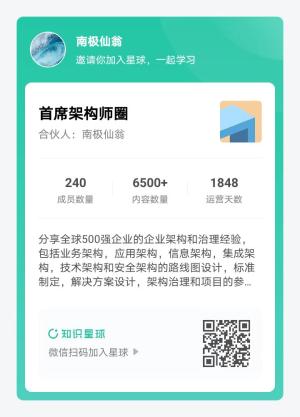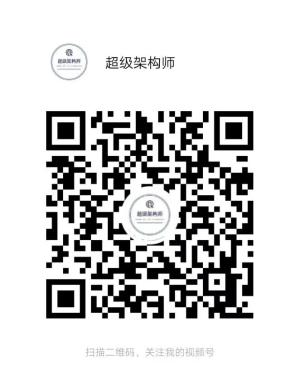什么是用户体验设计?
用户体验(UX)设计是流程设计团队用来创建产品,为用户提供有意义和相关的体验。用户体验设计涉及到获取和整合产品的整个过程的设计,包括品牌、设计、可用性和功能等方面。
设计体验不仅包括使软件易于使用,还包括设计与产品相关的其他体验,例如营销活动、包装和售后支持。最重要的是,用户体验设计关注的是提供解决痛点和需求的解决方案。毕竟,没有人会使用没有任何用途的产品。
目录
- What is User Experience (UX) Design?
- UX vs UI: What’s the Difference?
- UX Design—A Formal Definition
- UX Designers Consider the Who, Why, What, and How of Product Use
- UX Design is User-Centered
- Learn More about UX Design
- Questions related to User Experience (UX) Design
用户体验与用户界面:有什么区别?
你可能会看到“用户体验/用户界面设计师”的头衔,并认为用户体验和用户界面是可互换的。但是,尽管存在重叠,但它们是独立的学科。
“用户体验设计”经常与“用户界面设计”和“可用性”等术语互换使用。然而,虽然可用性和用户界面设计是用户体验设计的重要方面,但它们是子集。
用户体验设计师关注的是获取和集成产品的整个过程,包括品牌、设计、可用性和功能等方面。这个故事甚至在设备拿到用户手中之前就开始了。
“没有什么产品是孤岛。产品不仅仅是产品。它是一套有凝聚力的、集成的体验。思考产品或服务的所有阶段——从最初的意图到最终的思考,从第一次使用到帮助、服务和维护。让它们无缝地协同工作。”
--Don Norman,“用户体验”一词的发明者
因此,提供良好用户体验的产品(如iPhone)在设计时考虑到了产品的消费或使用,以及获取、拥有甚至故障排除的整个过程。同样,用户体验设计师不仅关注创造可用的产品,还关注用户体验的其他方面,如乐趣、效率和乐趣。因此,良好的用户体验没有单一的定义。相反,良好的用户体验可以满足特定用户在使用产品的特定环境中的需求。
一位用户体验设计师试图回答这样一个问题:“我们如何才能让与电脑、智能手机、产品或服务互动的体验尽可能直观、流畅和愉快?”
UX设计——一个形式化的定义
国际标准化组织(ISO)将用户体验定义为:
“一个人对产品、系统或服务的使用或预期使用所产生的感知和反应。”
--ISO 9241-210,人机交互的人类工效学——第210部分:交互系统的以人为本的设计
我们可以将这个定义分解为两部分:
- 一个人的看法和反应。
- 产品、系统或服务的使用。
在用户体验中,设计师对一个人的感知和反应没有太多的控制权——这是定义的第一部分。例如,他们无法控制用户在使用产品时的感觉、手指移动或眼睛。然而,设计者可以控制产品、系统或服务的行为和外观——这是定义的第二部分。
“一个人不能设计用户体验,只能为用户体验而设计。特别是,一个人无法设计感官体验,只能创造能够唤起它的设计特征。”
-JeffJohnson,旧金山大学计算机科学系助理教授
考虑用户体验设计最简单的方法是作为动词和名词。用户体验设计师设计(动词)——想法、计划、改变——影响用户体验的事物(名词)——对系统或服务的感知和响应。
例如,当使用物理设备(如电脑鼠标)时,我们可以控制产品的某些方面,这些方面会影响用户是否喜欢看、感觉和拿着它:
- 它放在他们手中的方式。它舒适吗?它是不是太大太笨重了?
- 重量。这会影响他们随心所欲地移动它的能力吗?
- 它的易用性。他们能自动使用它吗?还是必须认真思考才能实现目标?
当一个人使用数字产品时,例如计算机应用程序,我们可以影响的几个方面包括:
- 他们在系统中导航的直观程度。
- 有助于引导他们达到目标的线索。
- 在适当的时间对任务的重要方面的可见性。
用户体验设计师考虑产品使用的对象、原因、内容和方式
作为一名用户体验设计师,你应该考虑产品使用的“谁”、“为什么”、“什么”和“如何”。“为什么”涉及用户采用产品的动机,无论是与他们希望使用产品执行的任务有关,还是与用户与产品所有权和使用相关的价值观和观点有关。What解决了人们可以用产品做的事情——它的功能。最后,How以一种可访问和美观的方式与功能设计相关。
用户体验设计师从“为什么”开始,然后确定“什么”,最后是“如何创建用户可以形成有意义体验的产品”。在软件设计中,您必须确保产品的“物质”通过现有设备,并提供无缝、流畅的体验。
用户体验设计以用户为中心
由于用户体验设计涵盖了整个用户旅程,它是一个多学科的领域——用户体验设计师来自不同的背景,如视觉设计、编程、心理学和交互设计。为人类用户设计也意味着在可访问性方面要有更大的范围,并适应许多潜在用户的身体限制,例如阅读小文本。
用户体验设计师的典型任务各不相同,但通常包括用户研究、创建人物角色、设计线框和交互式原型以及测试设计。这些任务可能因组织而异。尽管如此,他们始终要求设计师成为用户的倡导者,并将他们的需求置于所有设计和开发工作的中心。这也是为什么大多数用户体验设计师以某种形式的以用户为中心的工作流程工作,并不断引导他们最明智的努力,直到他们以最佳方式解决所有相关问题和用户需求。

以用户为中心的设计是一个迭代过程,在这个过程中,您将了解用户及其上下文作为所有设计和开发的起点。
了解有关用户体验设计的更多信息
你可以在尼尔森-诺曼集团的网站上阅读和观看这个术语的发明者Don Norman关于用户体验设计的更多信息。
通过阅读Medium.com上关于用户体验的富有洞察力、有趣且鼓舞人心的材料,了解用户体验设计。
如果你现在想开始学习如何在用户体验设计中工作,交互设计基金会的在线课程是一个很好的起点。
在文章《用户体验与用户界面:区别是什么?》中了解更多关于用户体验和用户界面设计之间的区别?
与用户体验(UX)设计相关的问题
Does UX design require coding?
简单的回答是:不需要。用户体验设计师不需要知道如何编码。然而,拥有编码技能会给你带来很大的优势。了解如何编写代码将使您更高效,并更好地与开发人员沟通。当你了解网站和应用程序是如何构建的时,你可以成为一名更好的设计师。除非你是一个自启动的初创公司,否则你不需要是一个专业的程序员,也不会被期望产生代码。有关此问题的详细讨论,请参阅:
Will AI replace UX Design?
虽然人工智能可以帮助自动化任务并帮助用户体验设计师,但它不会完全取代它们。人工智能缺乏人类设计师带来的创造力和同理心。
人类设计师更善于理解人类行为和情感的细微差别。他们还可以跳出框框思考,开发人工智能无法开发的创造性解决方案。因此,尽管人工智能可以通过数据分析、智能建议和自动化帮助设计师提高效率和效率,但它无法取代它们。
For more on how designers can work with AI, watch this Master Class on AI-Powered UX Design: How to Elevate Your UX Career
How does UX design help businesses?
Showvideo transcript
-
-
-
-
-
-
-
-
-
-
-
A happy user will always return to a business. So, a good user experience directly contributes to a business’s revenues. In addition, UX design can help businesses by reducing development costs, creating a competitive advantage and reducing support costs. By investing in quality UX design, businesses can improve user satisfaction and drive growth.
Take this Master Class to learn How To Design UX That Users Love To Convert Through
Learn how to manage design teams and processes in an organization with this course: UX Management: Strategy and Tactics
为什么用户体验设计很重要?
用户体验设计之所以重要,是因为它专注于满足用户需求。这最终使企业受益,因为它提高了品牌声誉和忠诚度。良好的用户体验提供了竞争优势,并降低了产品故障的风险。更高一层楼,设计师通常都是很好的问题解决者,可以将他们的知识应用于更广泛的领域——不仅是特定的产品或服务,还可以应用于整个公司甚至社会。
Showvideo transcript
Find out how designers can help build a better future in this course: Design for a Better World with Don Norman
Do you need a college degree to become a UX designer?
Showvideo transcript
Most UX designers don’t have a degree in UX or a related field. Many are self-taught and have learned through practice. While some employers may prefer candidates with at least a bachelor's degree, they may not insist on one related to design, particularly if you have a strong portfolio. Many soft skills required to succeed in the field are transferable from other professions.
Ultimately, what matters most is your ability to demonstrate important UX design skills, mastery of the design process, proficiency in industry tools, and an understanding of core UX design principles.
There are several online and offline resources to learn UX design, many for free. However, that also means a lot of misinformation is present on the internet. One credible and free resource is the Interaction Design Foundation.
We offer the world's largest open-source library of expert and peer-reviewed UX design resources. See the latest free articles here.
If you’re ready to start learning, we recommend the course User Experience: The Beginner’s Guide
If you’re already familiar with UX design, then take this course to learn how you can showcase your portfolio to wow your future employer/client: How to Create a UX Portfolio
What tools are used in UX design?
The most basic tools in a UX designer’s arsenal are the humble paper and pen (or whiteboard and sticky notes). UX designers use different tools for different tasks in the design process. For example:
-
Survey tools such as Typeform and Google Forms help with user research.
-
Whiteboarding applications such as Miro and Whimsical are useful for affinity diagramming, brainstorming and defining user flows.
-
Interface design and prototyping tools like Figma, Adobe XD, Sketch and Marvel help designers communicate their ideas to stakeholders and developers and conduct usability testing.
For more on these tools, see these lists:
How does UX design work?
Showvideo transcript
There isn’t any standard UX design process. However, most teams tend to follow a variation of the 5-step design thinking process:
-
Empathize (through user research)
-
Define (through data analysis and synthesis)
-
Ideate (through brainstorming)
-
Prototype (using analog and digital tools)
-
Test (with real users)
UX design is a highly collaborative and iterative process. Designers plug back their findings from research and testing to improve the end user's experience.
Learn more about the design thinking process in this course: Design Thinking: The Ultimate Guide
What does a UX designer do?
A UX designer’s role in a project depends on the team size and project type. In small projects and teams, you can expect to conduct several tasks, including user research, creating user flows, wireframes, and prototypes, conducting usability tests, producing visual elements such as icons, and even defining the brand identity. In larger organizations and complex products, you may have more specialist roles such as researcher, interface designer and UX writer.
See these free resources to understand UX roles better:
The Ultimate Guide to Understanding UX Roles and Which One You Should Go For
What is a UX Designer and How do you Become One?
Ready to take the plunge? Take this course: User Experience: The Beginner’s Guide
Literature on User Experience (UX) Design
Here’s the entire UX literature on User Experience (UX) Design by the Interaction Design Foundation, collated in one place:
Learn more about User Experience (UX) Design
Take a deep dive into User Experience (UX) Design with our course User Experience: The Beginner’s Guide .
If you’ve heard the term user experience design and been overwhelmed by all the jargon, then you’re not alone. In fact, most practicing UX designers struggle to explain what they do!
“[User experience] is used by people to say, ‘I’m a user experience designer, I design websites,’ or ‘I design apps.’ […] and they think the experience is that simple device, the website, or the app, or who knows what. No! It’s everything — it’s the way you experience the world, it’s the way you experience your life, it’s the way you experience the service. Or, yeah, an app or a computer system. But it’s a system that’s everything.”
— Don Norman, pioneer and inventor of the term “user experience,” in an interview with NNGroup
As indicated by Don Norman, User Experience is an umbrella term that covers several areas. When you work with user experience, it’s crucial to understand what those areas are so that you know how best to apply the tools available to you.
In this course, you will gain an introduction to the breadth of UX design and understand why it matters. You’ll also learn the roles and responsibilities of a UX designer, how to confidently talk about UX and practical methods that you can apply to your work immediately.
You will learn to identify the overlaps and differences between different fields and adapt your existing skills to UX design. Once you understand the lay of the land, you’ll be able to chart your journey into a career in UX design. You’ll hear from practicing UX designers from within the IxDF community — people who come from diverse backgrounds, have taught themselves design, learned on the job, and are enjoying successful careers.
If you are new to the Interaction Design Foundation, this course is a great place to start because it brings together materials from many of our other courses. This provides you with both an excellent introduction to user experience and a preview of the courses we have to offer to help you develop your future career. After each lesson, we will introduce you to the courses you can take if a specific topic has caught your attention. That way, you’ll find it easy to continue your learning journey.
In the first lesson, you’ll learn what user experience design is and what a UX designer does. You’ll also learn about the importance of portfolios and what hiring managers look for in them.
In the second lesson, you’ll learn how to think like a UX designer. This lesson also introduces you to the very first exercise for you to dip your toes into the cool waters of user experience.
In the third and the fourth lessons, you’ll learn about the most common UX design tools and methods. You’ll also practice each of the methods through tailor-made exercises that walk you through the different stages of the design process.
In the final lesson, you’ll step outside the classroom and into the real world. You’ll understand the role of a UX designer within an organization and what it takes to overcome common challenges at the workplace. You’ll also learn how to leverage your existing skills to successfully transition to and thrive in a new career in UX.
You’ll be taught by some of the world’s leading experts. The experts we’ve handpicked for you are:
-
Alan Dix, Director of the Computational Foundry at Swansea University, author of Statistics for HCI: Making Sense of Quantitative Data
-
Ann Blandford, Professor of Human-Computer Interaction at University College London
-
Frank Spillers, Service Designer, Founder and CEO of Experience Dynamics
-
Laura Klein, Product Management Expert, Principal at Users Know, Author of Build Better Products and UX for Lean Startups
-
Michal Malewicz, Designer and Creative Director / CEO of Hype4 Mobile
-
Mike Rohde, Experience and Interface Designer, Author of The Sketchnote Handbook: The Illustrated Guide to Visual Note Taking
-
Szymon Adamiak, Software Engineer and Co-founder of Hype4 Mobile
-
William Hudson, User Experience Strategist and Founder of Syntagm
Throughout the course, we’ll supply you with lots of templates and step-by-step guides so you can start applying what you learn in your everyday practice.
You’ll find a series of exercises that will help you get hands-on experience with the methods you learn. Whether you’re a newcomer to design considering a career switch, an experienced practitioner looking to brush up on the basics, or work closely with designers and are curious to know what your colleagues are up to, you will benefit from the learning materials and practical exercises in this course.
You can also learn with your fellow course-takers and use the discussion forums to get feedback and inspire other people who are learning alongside you. You and your fellow course-takers have a huge knowledge and experience base between you, so we think you should take advantage of it whenever possible.
You earn a verifiable and industry-trusted Course Certificate once you’ve completed the course. You can highlight it on your resume, LinkedIn profile or website.



